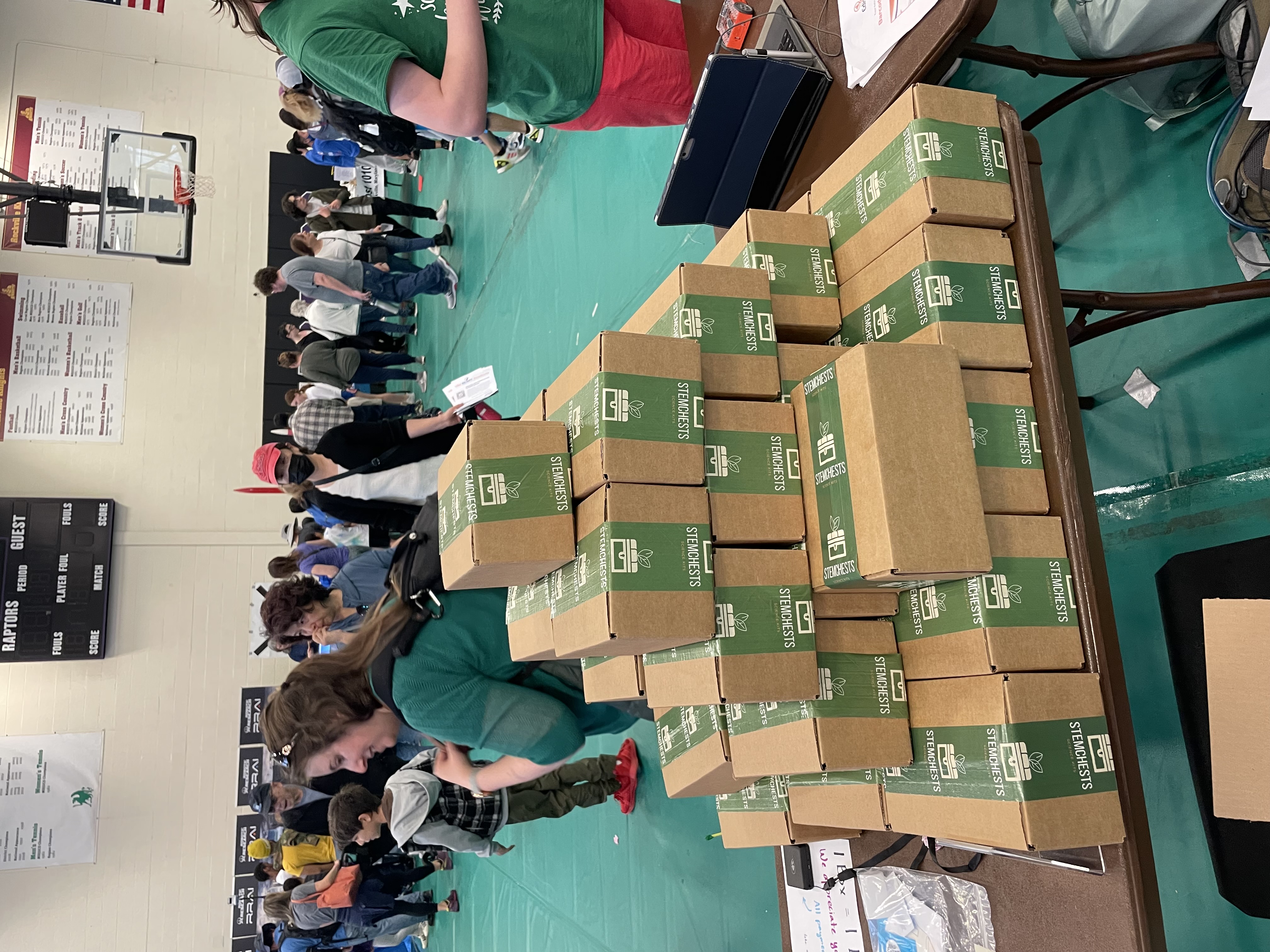Opening up opportunity with STEMChests
Founded by Blair students, this nonprofit makes science accessible to anyone
“When we were young, we'd all play with science kits and make experiments. That fostered our love for science,” Nuamen Audena, freshman at the University of Pennsylvania and founder of STEMChests says. The little science kits and basic experiments that they were gifted as kids drew them to the fields of STEM as they continued their education. This gave them the idea to make their own STEM kits for other students, to give them access to similar opportunities that they had.
For every five-dollar donation or kit that they sell, another is donated to a Title I elementary school in the D.C. area, providing more students with opportunities to develop a love for science. STEMChests also donates kits to Children’s National Hospital in D.C. and the Montgomery County Virtual Academy. STEMChests is an official 501(c)(3) nonprofit organization, so all purchases or donations to the organization are completely tax-deductible.
Alumni Aditya Das, Nuamen Audena, Annie Gao, and Anika Rai founded STEMChests in Dec. of 2021. “We wanted to make our own [kits] and make them pretty simple so basically anyone can get into science,”Audena says.
After their graduation, a new group of students took over STEMChests. Seniors Nubia Audena, Kathryn Gray, and Theodora Curtin are the current leaders at Blair. The organization has branches across several schools, with members and leadership at Whitman and BCC as well.
Right now, STEMChests sells one three-in-one kit featuring three engineering projects: a pop rocket, a pom-pom catapult, and a balloon-powered car. The projects are primarily made up of household materials, like straws, dowels, and balloons; and are packaged conveniently with easy-to-follow step-by-step instruction pamphlets. Despite the simple materials, a lot of work goes into creating the kits. “With the straw rockets, I have to cut the straws to a specific centimeters. Then I have to cut the dowels. Then I have to fold all the pamphlets for instructions. That’s only one of the kits, and there's three kits in one box. It takes a long time for it to actually become something.” Audena, director of kit manufacturing at STEMChests, says.
As well as sending kits to students, STEMChests participates in STEM fairs across the D.C. Metropolitan Area. They do workshops at colleges like Montgomery College, and visit Edison High School in Virginia every year for their STEM fair. There, they demonstrate science projects using their kits to visiting kids, selling some of their kits in the process. “We’re able to make enough of a profit from [workshops] that it can go towards buying more materials,” Gray, director of kit design at STEMChests, says.
The leadership team this year has been working hard to expand the organization to maximize their impact. Since leadership also has to focus on the business side of things, like applying for grants, signing up for workshops, and organizing meetings, they need additional members to help with making kits.
STEMChests currently only sells their 3-in-1 engineering project kit, but they are in the process of developing chemistry, physics, and biology kits. The process, however, has been difficult.
For the student-led organization, convenience and availability of resources complicates what kits STEMChests can create. For the biology kit, they wanted to include a project where students extract DNA from a strawberry, a common science project that can be completed with household materials, but, as strawberries are perishable and STEMChests doesn’t have a way to keep them fresh, they can’t be included in the kit. “You want to make sure stuff is going to keep well if you’re assembling it, and that stuff isn’t too expensive,” Gray says.
After the students figure out the cost of materials and the labor involved, they must decide how much to charge for each kit to keep their organization running. “Once you have a more tangible idea of what you want [to make], then you have to figure out everything that's included and how much buying those items in bulk will be. Then [figure out] how much it costs per kit to make,” Gray says. Finally, they must make the instructional pamphlets included with every kit, writing the comprehensive steps and creating art to make the projects as user-friendly as possible.
STEMChests is a welcoming community with a purpose. Nubia Audena joined because she loved the opportunity to help kids have fun with science, same with Gray. “I joined because science education is something that's important to me and I wanted more ways to make a tangible impact,” Gray says. Anyone can help the organization pursue its mission of fostering love for science in younger students by attending a meeting.
STEMChests meets on Tuesdays during the second half of lunch in Mr. Demma’s room, 352. Students who want more information can message STEMChests on Instagram.
Tags: science STEM
Josey Merolli. Hey, I'm Josey (she/her) and I'm entertainment editor! More »
Comments
No comments.
Please ensure that all comments are mature and responsible; they will go through moderation.
